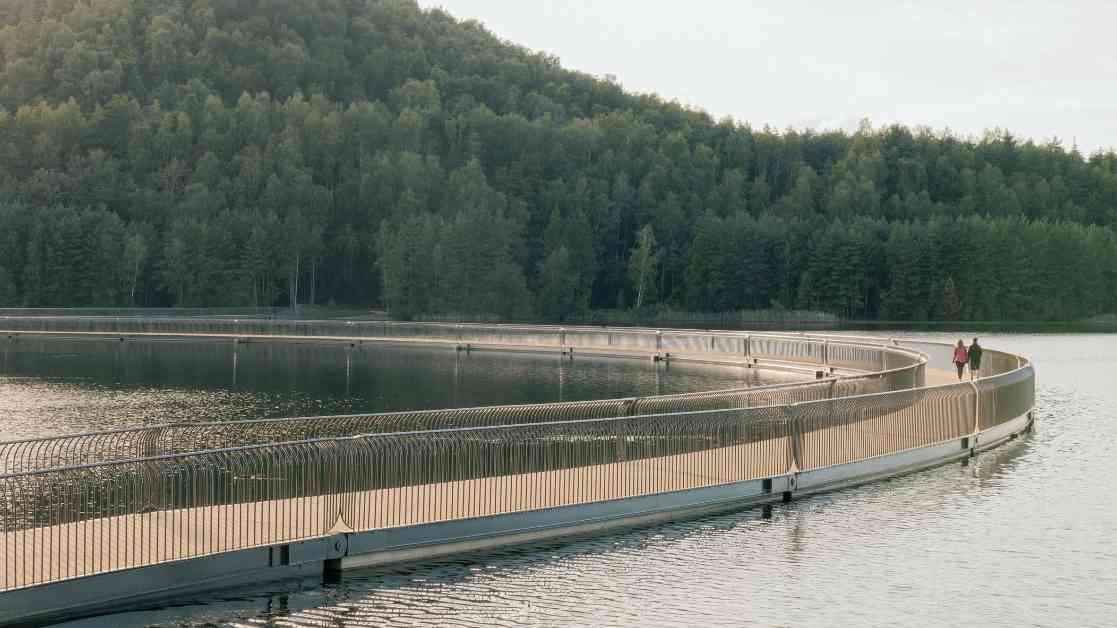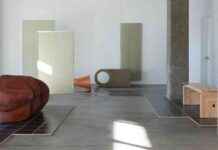Innovation in the Heart of Belgium: BuroLandschap’s Remarkable Cycle Bridge
A new marvel in the world of architecture has taken shape in the eastern province of Belgium, where landscape architect BuroLandschap has unveiled its latest creation, Cycling Between Terrils. This 400-meter-long bridge spans a lake, connecting the towns of Dilsen-Stokkem and Maasmechelen, adding to the allure of Limburg’s cycling network in Hoge Kempen National Park.
A Bridge Between the Past and the Present
The structure of Cycling Between Terrils is a testament to the region’s coal mining history, with its design inspired by the towering “terrils”—slagheap mountains that once served as remnants of the mining industry. These mountains have been repurposed as recreational areas for hikers and cyclists, offering a unique blend of natural beauty and historical significance.
Studio founder Pieter Daenen shared his vision for the bridge, emphasizing the importance of seamlessly integrating the structure into the landscape while providing an unforgettable experience for visitors. The goal was to create a harmonious balance between the man-made and natural elements, ensuring ecological sustainability alongside aesthetic appeal.
A Curved Path to Serenity
Rather than opting for a conventional straight design, BuroLandschap chose to craft an S-shaped bridge that meanders along the lake’s edge, offering cyclists and pedestrians a chance to immerse themselves in the surrounding scenery. The design, rooted in the principles of the Fibonacci sequence and the Golden Ratio, aims to create a visually pleasing structure that complements its environment.
The bridge’s flowing lines and organic form contribute to a sense of unity with nature, encouraging visitors to slow down, appreciate the view, and forge a deeper connection with the landscape. This holistic approach to design reflects BuroLandschap’s commitment to enhancing the overall experience for those who traverse Cycling Between Terrils.
A Technological Marvel Adapting to Nature
One of the most remarkable features of Cycling Between Terrils is its adaptability to the fluctuating water levels of the lake. Through a collaborative effort with engineering consultancy Tractebel, BuroLandschap designed a modular system consisting of 30 hinged pontoon elements, each 13 meters in length.
These elements are interconnected using flexible joints, allowing the bridge to move in tandem with the water’s rise and fall, ensuring stability and safety for users. Anchored to the lakebed below by submerged steel pilings, the structure is further reinforced by a concrete base filled with polystyrene insulation, enabling the pontoon to float effortlessly.
An Aesthetic Blend with Nature
To seamlessly blend Cycling Between Terrils with its surroundings, BuroLandschap opted for a surface layer of Maas gravel sourced from the nearby Maas River. This natural material not only enhances the bridge’s visual integration with the cycling paths but also provides a non-slip and comfortable surface for cyclists and pedestrians alike.
The 3.3-meter-wide bridge offers ample space for both cyclists and pedestrians to traverse, serving as a focal point for tourists exploring Limburg, known as Belgium’s “cycling province.” Its completion marks another milestone in the transformation of the Terhills area, once home to the Eisden coal mine, into a vibrant hub of outdoor recreation and natural beauty.
In Conclusion
As BuroLandschap’s Cycling Between Terrils stands as a testament to innovation and sustainability, it symbolizes the seamless integration of architectural design with historical and environmental preservation. By creating a bridge that not only connects two points but also bridges the past with the present, the studio has set a new standard for harmonious coexistence between man-made structures and the natural world. With its captivating design, adaptive technology, and aesthetic appeal, Cycling Between Terrils invites visitors to embark on a journey of discovery and connection with the rich tapestry of Belgium’s landscape.












